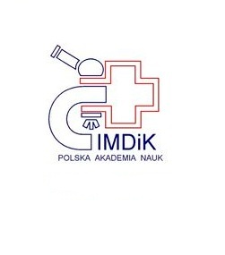- Wyszukaj w całym Repozytorium
- Piśmiennictwo i mapy
- Archeologia
- Baza Młynów
- Nauki przyrodnicze
Wyszukiwanie zaawansowane
Wyszukiwanie zaawansowane
Wyszukiwanie zaawansowane
Wyszukiwanie zaawansowane
Wyszukiwanie zaawansowane

Obiekt
Tytuł: Opportunistic infections of the central nervous system in the course of acquired immune deficiency syndrome (AIDS). Morphological analysis of 172 cases
Twórca:
Zelman, Irmina Barbara (1927–2010) ; Mossakowski, Mirosław Jan (1929–2001)
Data wydania/powstania:
Typ zasobu:
Inny tytuł:
Wydawca:
Miejsce wydania:
Typ obiektu:
Abstrakt:
Przeprowadzono analizę neuropatologiczną 172 przypadków AIDS pod kątem występowania i charakterystyki zakażeń opor- tunistycznych oun, stanowiących najczęstszą przyczynę ogniskowych zespołów neurologicznych. Materiał obejmował 155 przypadków dorosłych mężczyzn i 17 dorosłych kobiet. Średnia wieku wynosiła 38,5 lat. Kolekcja stanowiąca przedmiot analizy obejmowała przypadki zgromadzone w latach 1987-1997.Zakażenia op ortunistyczne obecne były w 57,5% przypadków i stanowiły w 38,4% wyłączny proces patologiczny, a w 19,1% współistniejący ze zmianami zależnymi od zakażenia HIV lub rozrostami nowotworowymi. Najczęstszymi zespołami patologicznymi były zakażenia wirusem cytomegalii (22,7%), pierwotniakiem toxoplasma gondii (16,3%) oraz postępująca wieloognis- kowa leukoencefalopatia (9,3%)i kryptokokoza (8,1%). Pozostałe zakażenia wirusowe (herpetyczne zapalenie mózgu, kleszczowe zapalenie mózgu i wieloogniskowa encefalopatia związana z zakażeniem wirusem herpes-zoster), bakteryjne (kiła, zapalenie przerzutowe związane z ropnymi zmianami zastawkowymi) oraz grzybicze (kandydoza) dotyczyły pojedynczych przypadków. Na odrębną uwagę zasługuje obecność 3 przypadków aspergilozy i 5 przypadków gruźlicy oponowo-mózgowej, której w 3 przypadkach towarzyszyły gruźliczaki parenchymalne.Cechą znamienną obrazu neuropatologicznego czterech najpospolitszych zakażeń oportunistycznych (cytomegalia, toksoplazmoza, PML i kryptokokoza) było bardzo znaczne zróżnicowanie ich postaci morfologicznych. Zespoły patomorfologiczne toksoplazmozy i kryptokokozy wykazywały odrębności obrazu w zależności od klinicznego leczenia preparatami ukierunkowanymi na właściwe patogeny. Przypadki PML znamionowało znaczne zróżnicowanie charakteru i nasilenia demielinizacji od typowych rozsianych ognisk do rozlanej demielinizacji obejmującej jedno- lub obustronnie istotę białą półkul mózgu lub móżdżku.Cechą znamienną przedstawionego materiału było zarówno współistnienie zakażeń oportunistycznych z wykładnikami infekcji HIV jak i różnych typów procesów oportunistycznych. Zwraca uwagę częste skojarzenie infekcji HIV z wirusowymi zakażeniami oportunistycznymi. Wymieszanie zmian HIV-zależnych z wykładnikami infekcji wirusowych innego typu oraz znaczne nasilenie patologii HIV-zależnej w tych razach może sugerować patogene- tyczną interakcję zakażeń wirusowych. Gruźlica oun w naszym materiale występowała rzadziej niż w innych zbiorach neuro- patologicznych, zwłaszcza amerykańskich. Na uwagę zasługuje jednak fakt, że większość przypadków infekcji tbc przypada na ostatni rok obserwacji.
Czasopismo/Seria/cykl:
Tom:
Zeszyt:
Strona pocz.:
Strona końc.:
Szczegółowy typ zasobu:
Format:
Identyfikator zasobu:
Język:
Język streszczenia:
Prawa:
Licencja Creative Commons Uznanie autorstwa 4.0
Zasady wykorzystania:
Zasób chroniony prawem autorskim. [CC BY 4.0 Międzynarodowe] Korzystanie dozwolone zgodnie z licencją Creative Commons Uznanie autorstwa 4.0, której pełne postanowienia dostępne są pod adresem: ; -
Digitalizacja:
Instytut Medycyny Doświadczalnej i Klinicznej im. M. Mossakowskiego Polskiej Akademii Nauk
Lokalizacja oryginału:
Biblioteka Instytutu Medycyny Doświadczalnej i Klinicznej im. M. Mossakowskiego PAN
Dofinansowane ze środków:
Dostęp:
Kolekcje, do których przypisany jest obiekt:
- Repozytorium Cyfrowe Instytutów Naukowych > Kolekcje Partnerów > Instytut Medycyny Doświadczalnej i Klinicznej PAN > Publikacje pracowników IMDik PAN
- Repozytorium Cyfrowe Instytutów Naukowych > Piśmiennictwo > Czasopisma/Artykuły
Data ostatniej modyfikacji:
1 lut 2022
Data dodania obiektu:
30 maj 2019
Liczba pobrań / odtworzeń:
182
Wszystkie dostępne wersje tego obiektu:
https://rcin.org.pl./publication/94290
Wyświetl opis w formacie RDF:
Wyświetl opis w formacie RDFa:
Wyświetl opis w formacie OAI-PMH:
Obiekty Podobne
Mossakowski, Mirosław Jan (1929–2001) Zelman, Irmina Barbara (1927–2010)
Mossakowski, Mirosław Jan (1929–2001) Zelman, Irmina B. (1927–2010)
Mossakowski, Mirosław Jan (1929–2001)
Mossakowski, Mirosław Jan (1929–2001)
Mossakowski, Mirosław Jan (1929–2001)

 INSTYTUT ARCHEOLOGII I ETNOLOGII POLSKIEJ AKADEMII NAUK
INSTYTUT ARCHEOLOGII I ETNOLOGII POLSKIEJ AKADEMII NAUK
 INSTYTUT BADAŃ LITERACKICH POLSKIEJ AKADEMII NAUK
INSTYTUT BADAŃ LITERACKICH POLSKIEJ AKADEMII NAUK
 INSTYTUT BADAWCZY LEŚNICTWA
INSTYTUT BADAWCZY LEŚNICTWA
 INSTYTUT BIOLOGII DOŚWIADCZALNEJ IM. MARCELEGO NENCKIEGO POLSKIEJ AKADEMII NAUK
INSTYTUT BIOLOGII DOŚWIADCZALNEJ IM. MARCELEGO NENCKIEGO POLSKIEJ AKADEMII NAUK
 INSTYTUT BIOLOGII SSAKÓW POLSKIEJ AKADEMII NAUK
INSTYTUT BIOLOGII SSAKÓW POLSKIEJ AKADEMII NAUK
 INSTYTUT CHEMII FIZYCZNEJ PAN
INSTYTUT CHEMII FIZYCZNEJ PAN
 INSTYTUT CHEMII ORGANICZNEJ PAN
INSTYTUT CHEMII ORGANICZNEJ PAN
 INSTYTUT FILOZOFII I SOCJOLOGII PAN
INSTYTUT FILOZOFII I SOCJOLOGII PAN
 INSTYTUT GEOGRAFII I PRZESTRZENNEGO ZAGOSPODAROWANIA PAN
INSTYTUT GEOGRAFII I PRZESTRZENNEGO ZAGOSPODAROWANIA PAN
 INSTYTUT HISTORII im. TADEUSZA MANTEUFFLA POLSKIEJ AKADEMII NAUK
INSTYTUT HISTORII im. TADEUSZA MANTEUFFLA POLSKIEJ AKADEMII NAUK
 INSTYTUT JĘZYKA POLSKIEGO POLSKIEJ AKADEMII NAUK
INSTYTUT JĘZYKA POLSKIEGO POLSKIEJ AKADEMII NAUK
 INSTYTUT MATEMATYCZNY PAN
INSTYTUT MATEMATYCZNY PAN
 INSTYTUT MEDYCYNY DOŚWIADCZALNEJ I KLINICZNEJ IM.MIROSŁAWA MOSSAKOWSKIEGO POLSKIEJ AKADEMII NAUK
INSTYTUT MEDYCYNY DOŚWIADCZALNEJ I KLINICZNEJ IM.MIROSŁAWA MOSSAKOWSKIEGO POLSKIEJ AKADEMII NAUK
 INSTYTUT PODSTAWOWYCH PROBLEMÓW TECHNIKI PAN
INSTYTUT PODSTAWOWYCH PROBLEMÓW TECHNIKI PAN
 INSTYTUT SLAWISTYKI PAN
INSTYTUT SLAWISTYKI PAN
 SIEĆ BADAWCZA ŁUKASIEWICZ - INSTYTUT TECHNOLOGII MATERIAŁÓW ELEKTRONICZNYCH
SIEĆ BADAWCZA ŁUKASIEWICZ - INSTYTUT TECHNOLOGII MATERIAŁÓW ELEKTRONICZNYCH
 MUZEUM I INSTYTUT ZOOLOGII POLSKIEJ AKADEMII NAUK
MUZEUM I INSTYTUT ZOOLOGII POLSKIEJ AKADEMII NAUK
 INSTYTUT BADAŃ SYSTEMOWYCH PAN
INSTYTUT BADAŃ SYSTEMOWYCH PAN
 INSTYTUT BOTANIKI IM. WŁADYSŁAWA SZAFERA POLSKIEJ AKADEMII NAUK
INSTYTUT BOTANIKI IM. WŁADYSŁAWA SZAFERA POLSKIEJ AKADEMII NAUK




































